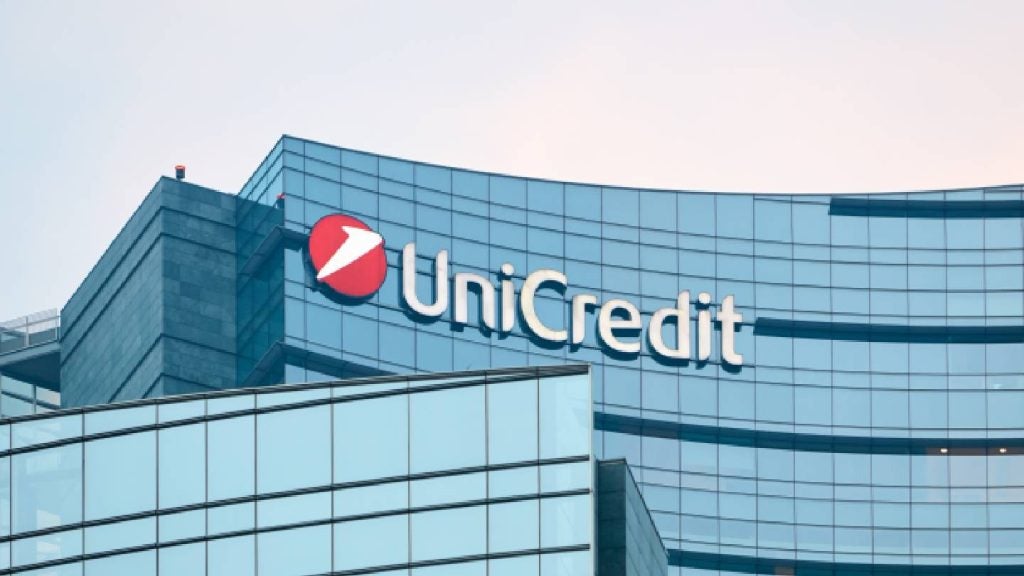For the longest time now, market segmentation has focused on millennials – but not all millennials are made equal – which is why banks are beginning to zoom in on other indicators such as socioeconomic status on top of age group. Enter the emerging affluent, who are believed to be the millionaires of tomorrow. As retail banks in Asia set out to court them, Xiou Ann Lim uncovers the underlying strategies behind this move as well as the hurdles that banks have to clear to make a success of this pursuit
The average Starbucks outlet typically features a snaking queue of coffee-drinkers served by amicable but hurried baristas who possess neither the time to provide lengthy explanations on the different roasts available nor the inclination to spell a customer’s name right when they scribble it on the cheap disposable takeaway cups. For a brief period of time, the American coffee giant seemed in imminent danger of losing its more discerning clientele to independent artisanal coffeehouses.

Access deeper industry intelligence
Experience unmatched clarity with a single platform that combines unique data, AI, and human expertise.
Then the coffee chain launched Starbucks Reserve – premium outlets fitted with bells and whistles, which cater to a segment of coffee lovers who are willing to pay more for exotic coffee beans brewed using complicated methods. If the iPad-toting baristas aren’t enough to raise the game on customer experience, Starbucks Reserve also launched an app that allows customers the convenience of placing orders before they get to the store. It even notifies them when their orders are ready for collection.
But Starbucks isn’t the only one taking a stab at catering to a more upmarket client segment. Retail banks have – in recent years – identified a new segment in the market comprising of young and technologically savvy consumers with rising disposable incomes. Dubbed the emerging affluent, they are wedged somewhere between the regular mass-market clients and the affluent ones.
Banking the emerging affluent – a snapshot
In a bid to appeal to this particular client segment, Citibank and Standard Chartered Bank have both diversified their retail products and services. But how is this approach faring so far in Asia?
“Being a new segment with a strong value proposition, we are very encouraged by the annualised double-digit growth in our client numbers,” says Charles Wong, head of retail banking at Citibank Singapore. Emerging affluent clients represent about 10 percent of the retail bank’s overall clients. He adds that the average number of products held by their clients – “which is a strong indicator of relationship strength” – has also increased.

US Tariffs are shifting - will you react or anticipate?
Don’t let policy changes catch you off guard. Stay proactive with real-time data and expert analysis.
By GlobalDataSpeaking for Standard Chartered Bank, CEO of retail banking Karen Fawcett reveals that emerging affluent clients are currently a focal point of the bank’s strategy. “They comprise almost 10 percent of our nine-million-plus client base across Asia, Africa as well as the Middle East – and they are our fastest-growing set of clients,” she says.
Fawcett also adds that this segment of clients are optimistic, getting wealthier and believe they are going to be better off in the future. According to the bank’s The Emerging Affluence Report 2015, nearly two out of three emerging affluent consumers have seen their incomes rise in the past year and almost three out of four expect a gain in income in the coming year.
“The emerging affluent comprise close to 20 percent of the retail banking market across Asia, Africa as well as the Middle East and they represent a $70 billion market opportunity by 2020 – according to our estimates,” Fawcett discloses. She adds that they want a bank with an aspirational brand that meets their needs to help them reach the next stage in their lives as they move up the wealth ladder.
Key differentiators of the emerging affluent
The emerging affluent segment exhibits consumption behaviours that differ from the regular mass-market clients and the affluent ones. American financial services company Fidelity Investments conducted a research and found that emerging affluent investors are more likely than millionaires to find a new financial advisor through internet research and social media.
The Fidelity research also found that 58 percent of emerging affluent investors have a significantly more positive impression of financial advisors who have a good website. In addition, 38 percent of those investors follow their advisors on social media sites and 30 percent say that they’re more likely to relate to a financial advisor with a social media presence.
In short, clients of this segment are generally digitally savvy. According to Wong: “Apart from their preference to use digital platforms that enable them to go online anytime and anywhere, solutions need to be simple and the speed in which this is done needs to be fast.”
Fawcett agrees: “The emerging affluent are upwardly mobile urban professionals and entrepreneurs. They are ambitious and want to get ahead, so they demand more from their banks. They expect convenient 24/7 banking delivered via digital channels. They engage with the world digitally, so they expect a great digital experience from their banks as well.” Evidently, solutions that help them purchase and save are important – she points out.
Mohit Mehrotra – who leads the global wealth management group at Deloitte – weighs in: “The client-facing technology that a mass-market client needs, expects and gets is quite different from the one that an emerging-affluent client needs, expects and gets.” He adds: “It’s not only the advisory and trading capabilities that need to be different, but the processing and settlement ones as well.”
Mehrotra uses the example of how most mass-market clients buy products that are made in the bank – but many of the emerging-affluent clients buy products that are not. “So, banks haves to consider how they want to cater to that kind of buying behaviour – where their ability to import, process and settle a product becomes an important part of the exercise as well,” he says.
How are banks meeting the needs of the emerging affluent?
Standard Chartered Bank has already developed products such as Mortgage One – which allows clients to pay off their mortgage while growing their savings – and credit cards that let clients accumulate air miles. In Hong Kong this year, the bank will start rewarding these clients for their relationship and business with the bank – through mortgages, credit cards and wealth management products. “We are also improving payment capabilities, speeding up loan approvals and offering free overseas ATM withdrawals,” Fawcett reveals.
Fawcett says that Standard Chartered Bank offers a full suite of banking and wealth management capabilities – including savings, investment and insurance products – which these clients are looking for at various stages of their life journey.
Meanwhile, Citi Priority – which caters to the emerging affluent – offers higher interest rates on deposits, lower rates on loans and benefits on unit trust and insurance policy purchases through the bank. Personal bankers are also available should clients require financial advice.
Challenges
Understanding and creating a new range of products and services to meet the needs of a different segment is not an easy undertaking. According to Wong, one of the main challenges Citibank faces in serving this client segment is in understanding their lifestyle and financial aspirations – before coming up with the relevant products and services to meet their needs.
“With greater wealth creation, customers’ needs have also evolved and they no longer just need a bank to manage their finances. They now seek a trusted adviser who is capable of giving them holistic advice covering their investment needs and other aspects of their lifestyle needs including insurance, mortgage and travel – among other things,” says Wong.
On the other hand, Fawcett talks about cost woes: “Given the diversity and growing size of the market, cost-effectively reaching out to the emerging affluent and fulfilling their needs are challenging undertakings.” She adds that it’s why a strong digital platform is indispensable; banks need to be able to develop new solutions to meet rapidly changing client needs at the right scale.
“They also need to be able to effectively engage with clients across digital channels, since this is increasingly what clients prefer. As this population becomes more international, multi-market capabilities will become increasingly important,” Fawcett predicts.
Mehrotra concurs with Fawcett’s view on cost. “There’s a fine balance between the amount of time, effort and patience banks put into nurturing the client’s suited life cycle because this may not yield high returns if the business and operating models aren’t efficient,” he cautions.
Emerging markets
Asia has always been unique in that it comprises a diverse mix of client segments. Often, strategies that work well in mature markets do not produce the same results in emerging ones. However, Wong notes that the propositions are similar across markets as the profiles of clients do not differ by much. “But one difference we have noticed is the mode of banking,” he notes, explaining that customers in some markets prefer to visit branches for banking transactions whereas those in other markets are more comfortable banking online and over the phone.
Meanwhile, Standard Chartered’s study found that the long-term aspirations of the emerging affluent in mature markets and developing ones are quite similar. “Typically, consumers across all these markets want to save so they can invest in property and travel abroad,” Fawcett reveals. But they do differ significantly when it comes to their short-term goals. “In places like Hong Kong and Singapore, they focus on lifestyle items such as international travel, while consumers in less mature markets are looking for solutions geared towards savings and their children’s education,” she explains.
Fawcett also notes that the investment products in mature markets have historically been more sophisticated since the clients in these markets have more investable wealth. But now – with improving internet connectivity and rising propensity for international travel – clients in less mature markets are increasingly aware of what’s available in markets like Singapore and Hong Kong and are expecting the same opportunities at home, according to her.
“What this means is that banks need to be able to meet these diverse and evolving client needs and offer a full range of products and services via convenient and easy-to-use channels,” Fawcett adds.
Conclusion – moving forward
Both Standard Chartered and Citibank recognise the opportunities that come with banking the emerging affluent and are ramping up their offerings as well as services to meet the needs of these discerning clients. As Wong says: “We are increasing our focus on simplifying their everyday banking needs with the ultimate aim of making it as easy and convenient as possible.”
Fawcett also shares that this is at the top of their agenda at Standard Chartered Bank: “We continue to improve our award-winning digital and online platforms and we’ve announced nearly $500 million in strategic investments through 2018 in retail – with additional investments into wealth management and other technology updates.”
Apart from that, the bank is also refreshing its digital marketing approach to better understand the needs of these clients and to effectively engage with them through social media.
But most importantly, Mehrotra cautions that many financial institutions get into the trap of treating segments as mega segments rather than subsegments: “There are many microsegments below each of these segments – the needs, behaviour and expectations of each are very different. So, retail banks really have to think about how they can build a strong subsegment-oriented value proposition … and this includes taking into account their legacy infrastructure as well as client-facing capabilities to keep up with the dynamic and changing needs of the emerging affluent.”







